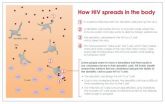(Press-News.org) OAK BROOK, Ill. – Type 2 diabetes may be associated with brain degeneration, according to a new multicenter study published online in the journal Radiology. The study also found that, contrary to common clinical belief, diabetes may not be directly associated with small vessel ischemic disease, where the brain does not receive enough oxygenated blood.
"We found that patients having more severe diabetes had less brain tissue, suggesting brain atrophy," said lead author R. Nick Bryan, M.D., Ph.D., professor of radiology at the Perleman School of Medicine at the University of Pennsylvania. "They did not seem to have more vascular disease due to the direct effect of diabetes."
According the American Diabetes Association (ADA), nearly 26 million people in the United States have diabetes, and 1.9 million more are diagnosed with the disease each year. Type 2 is the most common form of diabetes. In type 2 diabetes, either the pancreas does not produce enough insulin or the cells ignore the insulin that is produced. The ADA estimates that, based on current trends, as many as one in three American adults will have diabetes in the year 2050.
"As diabetes becomes more common, better understanding of the disease and its management becomes even more important in order to minimize its effect on patient health," Dr. Bryan said.
For the study, Dr. Bryan and colleagues used magnetic resonance imaging (MRI) to investigate the association between severity and duration of type 2 diabetes mellitus and brain structure in 614 patients (mean age 62 years) at four participating centers (University of Minnesota, Minneapolis, Minn.; Wake Forest Medical School, Winston-Salem, N.C.; Columbia University, New York, N.Y.; and Case Western Reserve University, Cleveland, Ohio). The mean duration of disease in the study group was 9.9 years. The researchers specifically tested whether more severe diabetes was inversely correlated with brain volumes and positively correlated with ischemic lesion volumes.
The results showed that longer duration of diabetes was associated with brain volume loss, particularly in the gray matter. However, the study found no association of diabetes characteristics with small vessel ischemic disease in the brain.
"Diabetes duration correlated primarily with brain atrophy," Dr. Bryan said. "Stated another way, our results suggested that, for every 10 years of diabetes duration, the brain of a patient with diabetes looks approximately two years older than that of a non-diabetic person, in terms of gray matter volume."
The researchers noted that their findings may have implications for future decline of cognitive function in patients with diabetes and raise the possibility that such cognitive changes might not be strongly related to vascular dementia but to neurodegenerative disor¬ders, such as Alzheimer's disease.
INFORMATION:
"Effect of Diabetes on Brain Structure: The Action to Control Cardiovascular Risk in Diabetes MR Imaging Baseline Data." Collaborating with Dr. Bryan were Michel Bilello, M.D., Ph.D., Christos Davatzikos, Ph.D., Ronald M. Lazar, M.D., Anne Murray, M.D., M.S., Karen Horowitz, M.D., James Lovato, M.S., Michael E. Miller, Ph.D., Jeff Williamson, M.D., and Lenore J. Launer, Ph.D.
This report is from the Action to Control Cardiovascular Risk in Diabetes (ACCORD) project, funded by the National Heart, Lung, and Blood Institute and the National Institute on Aging.
Radiology is edited by Herbert Y. Kressel, M.D., Harvard Medical School, Boston, Mass., and owned and published by the Radiological Society of North America, Inc. (http://radiology.rsna.org/)
RSNA is an association of more than 53,000 radiologists, radiation oncologists, medical physicists and related scientists promoting excellence in patient care and health care delivery through education, research and technologic innovation. The Society is based in Oak Brook, Ill. (RSNA.org)
For patient-friendly information on brain MRI, visit RadiologyInfo.org.
Diabetes duration and severity associated with brain atrophy
2014-04-29
ELSE PRESS RELEASES FROM THIS DATE:
Review offers insight on managing surgical patients who are taking new drugs to prevent blood clots
2014-04-29
New oral anticoagulant drugs that treat and prevent clots offer a much-needed alternative to warfarin, which has been used for more than 6 decades and has serious shortcomings. A new article published in BJS (British Journal of Surgery) gives an overview of the major clinical trials and recommendations related to these new agents and will serve as a practical guide for their use in patients who require planned or emergency surgery.
Warfarin has been the drug of choice to control blood clots in a variety of patients, including people with certain types of irregular heartbeats, ...
Live virus implicates camels in MERS outbreak
2014-04-29
There is new, more definitive evidence implicating camels in the ongoing outbreak of Middle East Respiratory Syndrome, or MERS. Scientists at the Center for Infection and Immunity at Columbia University's Mailman School of Public Health, King Saud University, and EcoHealth Alliance extracted a complete, live, infectious sample of MERS coronavirus from two camels in Saudi Arabia. The sample matched MERS coronavirus (MERS-CoV) found in humans, indicating that the virus in camels is capable of infecting humans and that camels are a likely source of the outbreak.
Results ...
Low cholesterol in immune cells tied to slow progression of HIV
2014-04-29
PITTSBURGH, April 29, 2014 – People infected with HIV whose immune cells have low cholesterol levels experience much slower disease progression, even without medication, according to University of Pittsburgh Graduate School of Public Health research that could lead to new strategies to control infection.
The Pitt Public Health researchers found that low cholesterol in certain cells, which is likely an inherited trait, affects the ability of the body to transmit the virus to other cells. The discovery, funded by the National Institutes of Health (NIH), is featured in today's ...
Low cholesterol in immune cells slows HIV progression
2014-04-29
Scientists at the University of Pittsburgh have identified why some HIV-infected people experience much slower disease progression, even without medication, and it has to do with cholesterol levels in specific immune cells. They report their findings in mBio®, the online open-access journal of the American Society for Microbiology.
"A fascinating aspect of the AIDS epidemic is that a small percentage of HIV-1-infected persons, termed nonprogressors or controllers, maintain a relatively normal number of CD4 T cells (Th cells) and low viral load for many years without ...
When harm done can never be balanced: Vicarious revenge and the death of Osama bin Laden
2014-04-29
April 29, 2014 – Friday will mark the third anniversary of Osama bin Laden's assassination, a day when U.S. President Barack Obama famously stated "Justice has been done." But has it? A new study from a team of social psychology researchers led by Mario Gollwitzer of Philipps University of Marburg, has questioned whether this instance of vicarious revenge led to feelings of satisfaction and reestablished justice within the American public, including whether bin Laden's assassination ignited craving for more revenge.
Justice achieved
Vicarious revenge, where the need ...
Snobby staff can boost luxury retail sales
2014-04-29
When it comes to luxury brands, the ruder the sales staff the better the sales, according to new research from the University of British Columbia's Sauder School of Business.
The forthcoming Journal of Consumer Research study reveals that consumers who get the brush-off at a high-end retailer can become more willing to purchase and wear pricey togs.
"It appears that snobbiness might actually be a qualification worth considering for luxury brands like Louis Vuitton or Gucci," says Sauder Marketing Professor Darren Dahl. "Our research indicates they can end up having ...
NIH center sets new goals for global health research and training
2014-04-29
Global health research and training efforts should focus on combatting the growing epidemic of noncommunicable diseases, better incorporating information technology into research and training, and more effectively converting scientific discoveries into practice in low-resource settings, according to the Fogarty International Center's new strategic plan, released today. Fogarty is the component of the National Institutes of Health solely focused on supporting global health research and training, and coordinating international research partnerships across the agency.
As ...
Study of stem cell trials links discrepancies in data with reported success of treatment
2014-04-29
New research looking at the success of clinical trials of stem cell therapy shows that trials appear to be more successful in studies where there are more discrepancies in the trial data.
Researchers from Imperial College London conducted a meta-analysis of 49 randomised controlled trials of bone marrow stem cell therapy for heart disease. The study, published today in the British Medical Journal, identified and listed over 600 discrepancies within the trial reports.
Discrepancies were defined as two (or more) reported facts that could not both be accurate because ...
Annals of Internal Medicine tip sheet for April 29, 2014
2014-04-29
1. Viral hepatitis remains a major health concern in the U.S.
Experts comment on HHS 2014-2016 Viral Hepatitis Action Plan
Untreated chronic viral hepatitis affects between 3.5 and 5.3 million Americans and continues to fuel rising incidences of progressive liver disease, liver failure, and liver cancer. In 2011, the U.S. Department of Health and Human Services (HHS) unveiled the nation's first coordinated national approach to tackling viral hepatitis with the Action Plan for the Prevention, Care and Treatment of Viral Hepatitis in the United States. Priorities set ...
AAN issues findings on use of medical marijuana in treatment of certain brain diseases
2014-04-28
MINNEAPOLIS – A review by the American Academy of Neurology of available scientific research on the use of medical marijuana in brain diseases finds certain forms of medical marijuana can help treat some symptoms of multiple sclerosis (MS), but do not appear to be helpful in treating drug-induced (levodopa) movements in Parkinson's disease. Not enough evidence was found to show if medical marijuana is helpful in treating motor problems in Huntington's disease, tics in Tourette syndrome, cervical dystonia and seizures in epilepsy. The review is published in the April 29, ...

